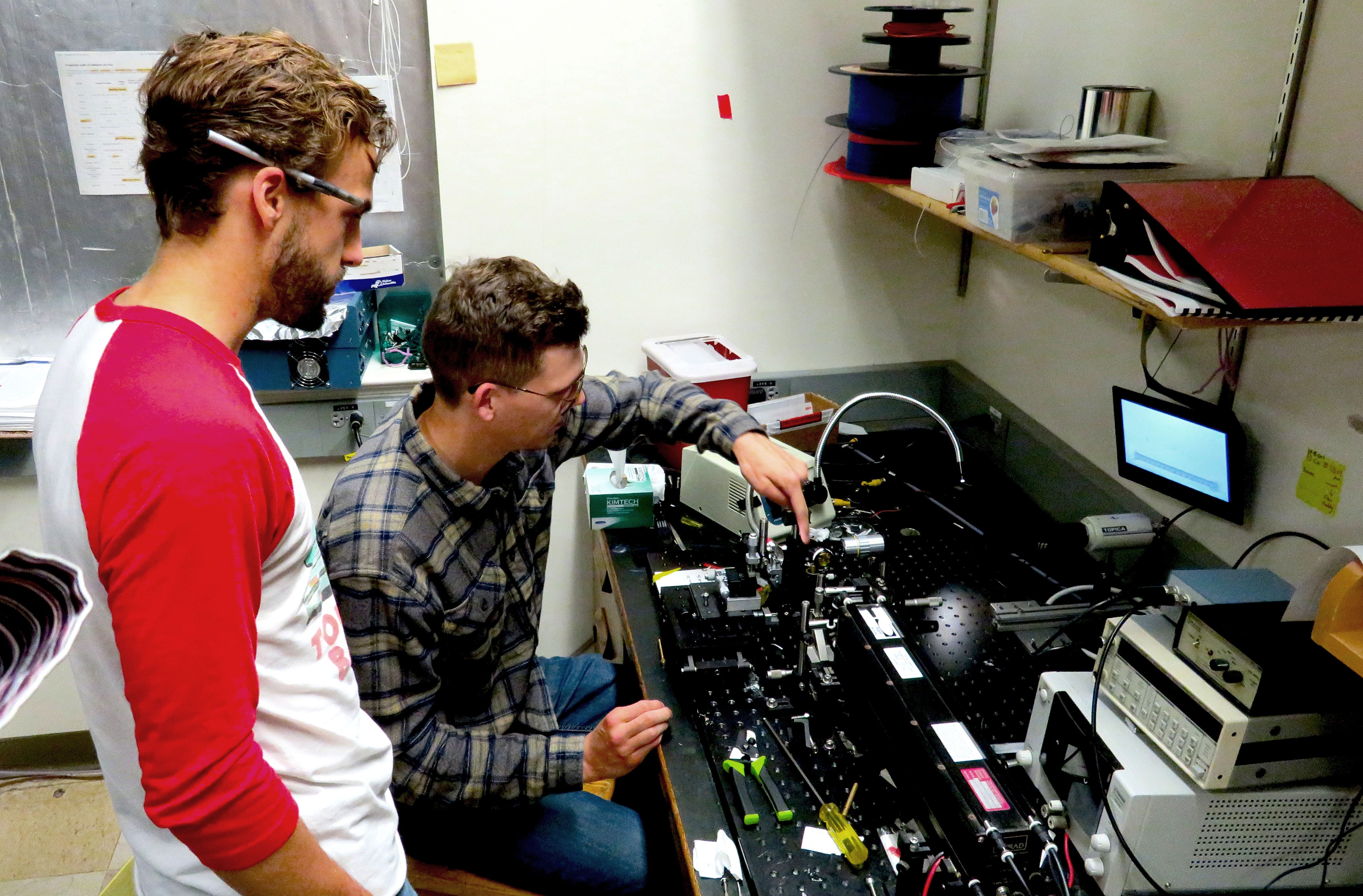We study the physics of nanometer-scale systems like carbon nanotubes and graphene, and quantum systems in solids, like the nitrogen vacancy spin qubit (quantum bit) in diamond and the artificial atoms in hexagonal boron nitride.

Pictured above is a graphene triangular cantilever (false-colored in blue) viewed in a scanning electron microscope. This “diving board” can freely vibrate, and we “see” these vibrations in the lab using lasers. The diving board is a single atom in thickness and the two supporting legs are 200 nanometers wide, or about 1000 times smaller than the thickness of a sheet of paper. We make the structure by cutting it from a circular (outer boundary) graphene drumhead. The cutting is achieved with a focused beam of ions (gallium ions), which act like an atomically sharp X-Acto knife. The Alemán group is the first in the world to be able to shape suspended two-dimensional materials, like graphene, with arbitrary control. By shaping the graphene structure, we can control the frequency or “tone” of its vibrations, much like shaping a guitar body can change the tone of the guitar. By controlling and adjusting the tone, we can make the graphene vibrating structure more sensitive to its environment. For example, we can make these structures more sensitive to bits of mass landing on their surface. How sensitive? The triangular cantilever shown above can detect the mass of 30 gold atoms!

